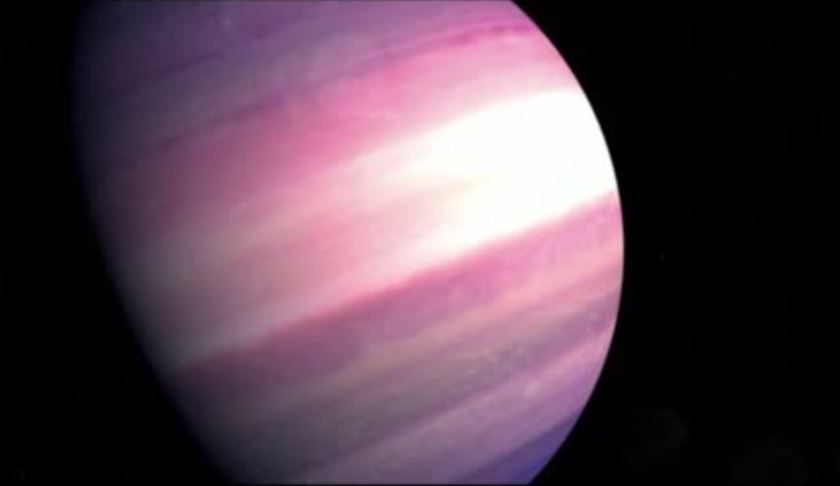
North Fort Myers man set to face trial for murder and child abuse charges
Nicholas Canfield, accused of first-degree murder, aggravated child abuse, and sexual battery on a child, is set to face jury selection.

NASA’s planet hunter satellite TESS has discovered an exoplanet orbiting two stars instead of one — and it was identified by a high school intern. The announcement of the circumbinary planet prompted comparisons with Luke Skywalker’s home world of Tatooine in the “Star Wars” movie series, with its bewitching double sunsets.
But the newly found planet’s size alone — it is 6.9 times larger than Earth, almost the size of Saturn — makes it unlikely to be livable. Named TOI 1338 b, it is the only planet in the TOI 1338 system, which lies 1,300 light-years away in the constellation Pictor, and orbits its stars every 95 days.
The two stars orbit each other every 15 days. One is about 10 percent bigger than our Sun, while the other is cooler, dimmer and only one-third the Sun’s mass.
TOI 1338 b was identified by Wolf Cukier, a 17-year-old high school student who had an internship with NASA last summer.
“I was looking through the data for everything the volunteers had flagged as an eclipsing binary, a system where two stars circle around each other and from our view eclipse each other every orbit,” Cukier said. “About three days into my internship, I saw a signal from a system called TOI 1338. At first I thought it was a stellar eclipse, but the timing was wrong. It turned out to be a planet.”
TESS Satellite Discovered Its 1st World Orbiting 2 Stars by NASA Goddard on YouTube
The system had been flagged as an eclipsing binary, where two stars circle around each other and eclipse each other from our point of view. But after going over the data, Cukier realized that a planet was present too.
Circumbinaries are difficult to detect, and scientists have now confirmed about two dozen, with the first discovered in 1993.
NASA also announced that TESS had discovered an Earth-sized world within the habitable range of its star, which could allow the presence of liquid water.
Another first for the Transiting Exoplanet Survey Satellite is its discovery of a world orbiting two stars, evoking the planet Tatooine from Star Wars but unlikely to be hospitable to life as we know it.
The potentially habitable planet, named “TOI 700 d,” is relatively close to Earth — only 100 light years away, NASA’s Jet Propulsion Laboratory announced during the winter American Astronomical Society meeting in Honolulu, Hawaii on Monday.
Proxima Centauri, the closest star to Earth, is just over four light years away.
“TESS was designed and launched specifically to find Earth-sized planets orbiting nearby stars,” said Paul Hertz, NASA astrophysics division director.
TESS initially misclassified the star, which meant the planets appeared larger and hotter than they actually are. But several amateur astronomers, including high school student Alton Spencer — who works with members of the TESS team — identified the error.
“When we corrected the star’s parameters, the sizes of its planets dropped, and we realized the outermost one was about the size of Earth and in the habitable zone,” said Emily Gilbert, a graduate student at the University of Chicago.
The discovery was later confirmed by the Spitzer Space Telescope.
A few other similar planets have been discovered before, notably by the Kepler Space Telescope, but this is the first discovered by TESS, which was launched in 2018.
TESS stabilizes on one area of the sky to detect whether objects — planets — pass in front of stars, which causes a temporary drop in the stars’ luminosity. This allows TESS to infer the presence of a planet, its size and orbit.
Star TOI 700 is small, about 40 percent of our sun’s size and only about half as hot.
TESS discovered three planets in orbit, named TOI 700 b, c and d. Only “d” is in the so-called “Goldilocks zone,” not too far from and not too close to the star, where the temperature could allow the presence of liquid water.
The name is an allusion to the fairy tale “Goldilocks and the Three Bears,” in which a young girl samples three bowls of porridge and finds that one is “just right — not too hot and not too cold.”
TOI 700 d is about 20 percent larger than Earth and orbits its star in 37 days. It receives 86 percent of the energy that Earth receives from the sun.